The Benefits of Using Scissor Lifts in Retail Stockrooms
Managing a retail stockroom can be challenging, especially with the constant inventory flow. Employees often have to lift and organise heavy items, which can cause injuries and slow things down. Businesses now use scissors lifts to make stockrooms more efficient and safer. These lifts reduce the physical strain on employees and make it easier to get work done in limited spaces.
What Are Scissor Lifts?
1. Definition and Function
Scissor lifts are mechanical devices designed to raise and lower heavy items with minimal effort. They consist of a sturdy platform that moves vertically using a scissor-like mechanism, making lifting and handling materials easier. These lifts are often used in environments where items must be loaded, stacked, or organised at various heights, reducing the physical strain on employees and increasing productivity.
2. Key Components
A scissor lift is made up of several essential parts:
-
Platform: The flat surface where the load is placed, available in different sizes and materials.
-
Scissor Legs: The crisscrossing legs that lift and lower the platform. Their length and number decide how high the lift can go.
-
Base Frame: The sturdy bottom frame keeps the lift stable and supports heavy loads.
-
Control Unit: The controls used to raise or lower the platform.
-
Safety features: include guardrails and valves to ensure safe use and prevent overloading.
-
Power Source: The lift can run on diesel, or electric power.
-
Key Switch: The lift can be operated from the base or the platform controls.
Benefits of Using Scissor Lifts in Retail Stockrooms
-
Improved Safety
Scissor lifts greatly enhance employee safety. By reducing the need to lift heavy items manually, they help prevent back and muscle injuries. With a stable platform that can be adjusted to the right height, workers can safely move products without the risk of dropping them.
-
Increased Efficiency
These lifts speed up stockroom tasks, allowing employees to load and unload shelves more quickly. By making lifting items to the correct height easier, scissor lifts save time during inventory management, and keep stockrooms organised.
-
Space Optimisation
The compact design of the scissor lifts is perfect for tight stockroom spaces. They can fit into narrow aisles, enabling efficient stacking of goods. This helps retailers maximise storage while keeping items accessible.
-
Versatility
Scissor lifts are versatile and can handle different sizes and weights of merchandise. Their adjustable height allows workers to customise the platform for various tasks, whether lifting boxes or reaching high shelves. This adaptability makes them essential tools for any retail stockroom.
4 Things to Look for in a Retail Scissor Lifts
-
Load Capacity and Platform Size
When choosing a scissor lift for retail use, load capacity and platform size are critical. The lift must safely support the weight of the items or personnel being elevated, ensuring it meets the operational requirements. Additionally, the platform size should accommodate the stockroom or retail environment, offering enough space for comfortable and efficient merchandise handling.
-
Safety Features
Safety is paramount when operating a scissor lift. Look for features such as emergency stop buttons, guardrails, and fall protection systems. These safety mechanisms help prevent accidents, protecting both workers and stock. Anti-slip surfaces on the platform can further reduce the risk of slips and falls during operation.
-
Ease of Operation and Maintenance
A scissor lift with easy-to-use controls improves efficiency in day-to-day tasks. Opt for models with straightforward, intuitive control panels that simplify lifting and lowering. Maintenance is also important—select a lift designed for easy servicing, with accessible components that allow for quick inspections, repairs, and cleaning.
-
Versatility and Custom Features
Some scissor lifts offer advanced features like extendable platforms, precise control systems, or automatic levelling. These can be particularly useful in busy retail environments where flexibility is key. Customisable features, such as enhanced mobility or platform extensions, can provide added convenience and efficiency in a range of tasks.
Conclusion
Utilising scissor lifts in retail stockrooms significantly enhances safety, efficiency, and productivity. These machines alleviate the physical strain of lifting heavy items, reducing the risk of injury while streamlining inventory management tasks. Their ability to elevate employees or materials allows for improved access to products stored at various heights, optimising the use of vertical space in tight areas.
When selecting a scissor lift, retailers should evaluate factors such as load capacity, mobility, safety features, ease of operation, and any customised options to meet specific needs. Investing in the right scissor lifts will not only contribute to a safer working environment but also promote a more organised and productive stockroom, leading to satisfied employees and improved business performance.
Get Your Scissor Lift Quote Today!
Interested in scissor lifts? Fill out our quick quote request form, and suppliers will provide you with the best options available. Request a scissor lift quote now to find the right lift for your needs!
FAQ:
-
How do scissor lifts improve safety in stockrooms?
They reduce the need for employees to lift heavy items manually, lowering the risk of back injuries. Workers can safely move products at the right height on a stable platform.
-
What are the main components of a scissor lift used in stockrooms?
Key parts include the platform (where items are placed), scissor legs (for lifting), a base frame (for stability), and safety features like guardrails.
-
What should I consider when choosing a scissor lift for my stockroom?
Consider the lift's load capacity, platform size, safety features, ease of operation, and maintenance requirements to ensure it meets your stockroom needs.

.jpeg)
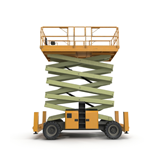
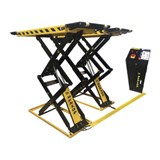
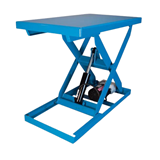


-160x160-state_article-rel-cat.png)




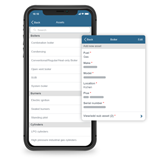

-160x160-state_article-rel-cat.png)


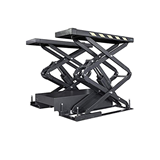
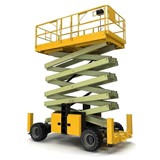
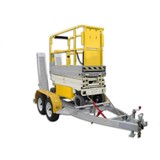
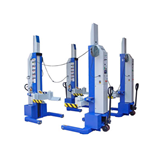
-205x205.jpeg)
